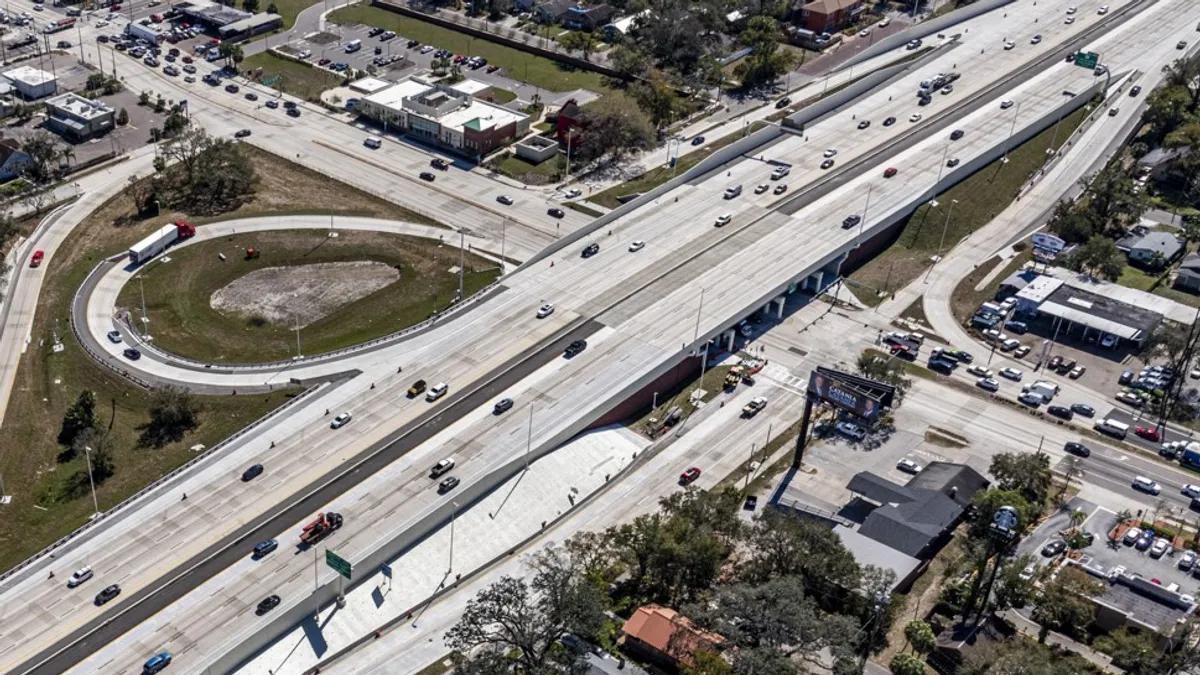As the Infrastructure Investment and Jobs Act rolls out, relevant agencies and organizations are planning how to best make use of the funds. That means taking advantage of the five-year influx of spending to build for the needs of a rapidly shifting world, said presenters at a National Institute of Building Sciences webinar on April 19.
“Things are changing in terms of how we view infrastructure…we’re not just thinking about business and economic development only, we’re thinking of how we affect the entire community,” said Dan Pippenger, COO at the Port of Portland, Oregon, at the webinar. His organization manages airports and marine terminals in the Portland area.
“Our infrastructure has to be adaptable and reliable, and it’s not today,” Pippenger said. “It’s not made for the future challenges we’re going to have.”
The American Society of Civil Engineers gave the country’s infrastructure a C- grade in its latest report card. Many sectors have massive maintenance backlogs and don’t meet current and future demand, the 2021 analysis found.
Extreme weather and resilience
A key factor builders and agencies must plan for is climate change, Pippenger said. Rising temperatures and sea levels will have myriad downstream effects, and scientists say to expect more severe weather — from flooding to wildfires to earthquakes — and at a greater frequency.
“Climate change is here, and it’s hitting us, and it’s making changes both to our vegetation and our water supply,” said Pippenger. “We really need to be thinking about that when we think about infrastructure.”
To that end, the POP is using $3.75 million in infrastructure act funds to help build a $140 million seismically resilient runway at the Portland Airport so it can survive a severe earthquake. It’s using another IIJA grant for a ground source heating system to electrify heating and cooling in the terminal, which will cut energy usage in half.
Pippenger said the infrastructure act funds are ideal for projects that address future problems and even save money down the road, but wouldn’t pan out financially in the short-term.
Thinking about infrastructure projects in a holistic way isn’t a passing fad, the speakers said, but is rather good strategy and business sense. The growing wave of ESG reporting in the construction sector and beyond over the past few years indicates that the environmental and social implications of projects will be increasingly important to consider.
“Wall Street…is partly driving the ESG initiatives at the moment,” said Carla Bailo, Center for Automotive Research, at the webinar.
Tech, culture shifts
Technological and cultural evolutions will also shape infrastructure needs in the decades ahead. “We need to think about disruptions that are not necessarily climate change, but simply technology and social behavior,” said Pippenger.
COVID-19, which touched just about every facet of life across the world, is an obvious example of such a disruption. The pandemic accelerated the adoption of touchless technology in airports, and architects now favor more flexible and open design for terminals that could be used for health testing and more, Pippenger said.
Bailo also gave the example of electrical vehicles, which have rapidly grown in popularity over the past few years. Beyond a network of chargers, the rise of EVs also necessitates new battery and vehicle plants, particularly in the Southeast where energy is cheaper and more green. The country will also need stronger broadband and cellular networks to facilitate self-driving cars, Bailo said.
Other transportation infrastructure must adapt to EVs as well. For example, marine terminals need to be able to accomodate EVs, said Pippenger, which requires authorities to add more substations nearby to handle the extra power draw. Melissa Connolly, Assistant VP of government affairs at the Association of American Railroads, urged transportation agencies to plan for potential IIJA-funded projects as fast as possible.
While planning for future needs may mean more work and cost up front, the extra care pays off, experts say. Contractors that build for resilience and connectivity will have a leg up on their competition in coming years.
“One of the challenges of building infrastructure in the United States now, even with the bill, is that it’s really not looking forward to things that might happen, it’s about what you can do now and get bang for the buck,” Pippenger said. Instead, we need to be “really thinking ahead about all those disruptions and how we build infrastructure that’s flexible.























